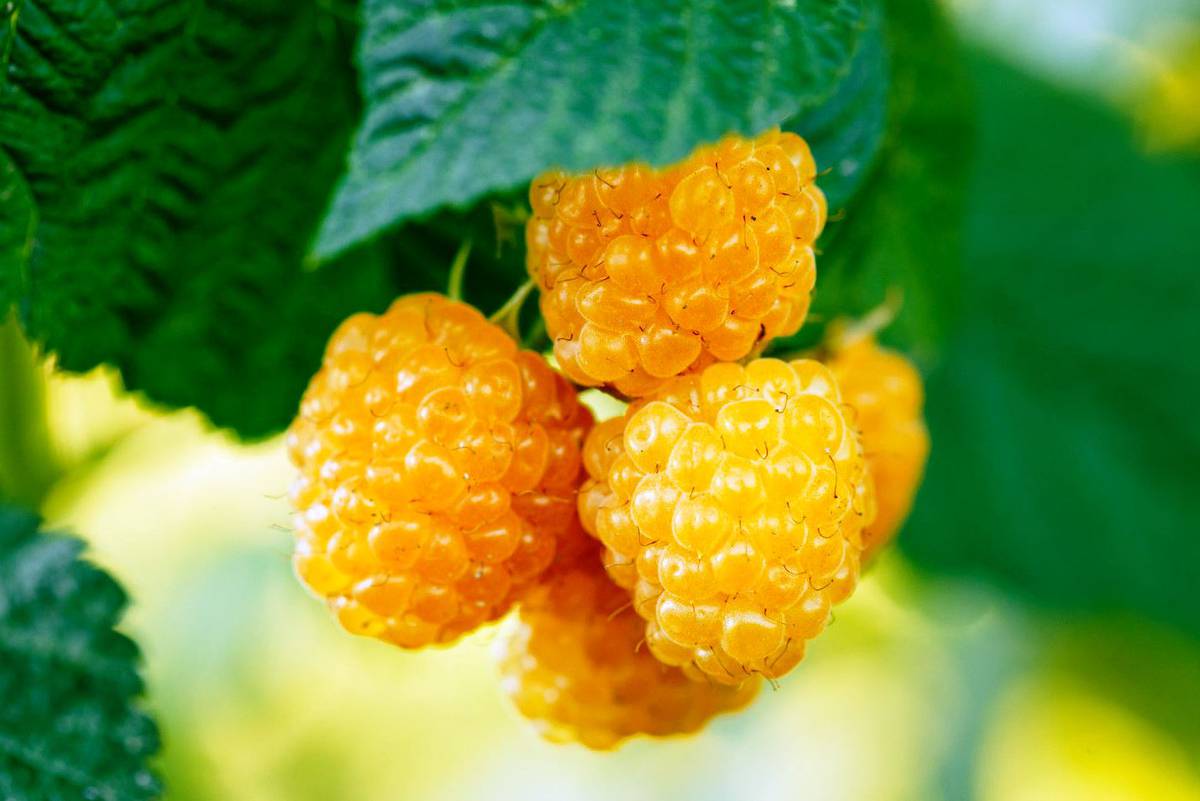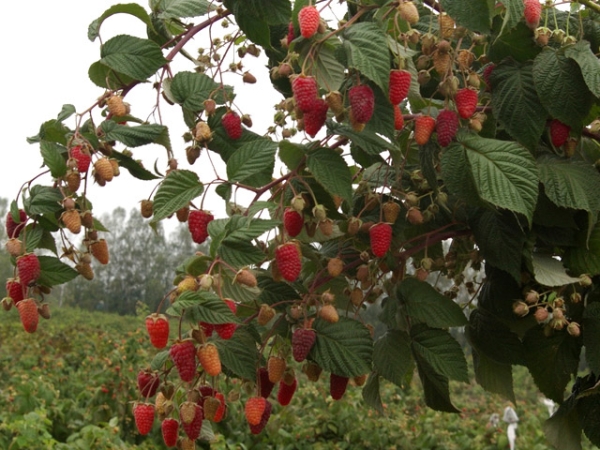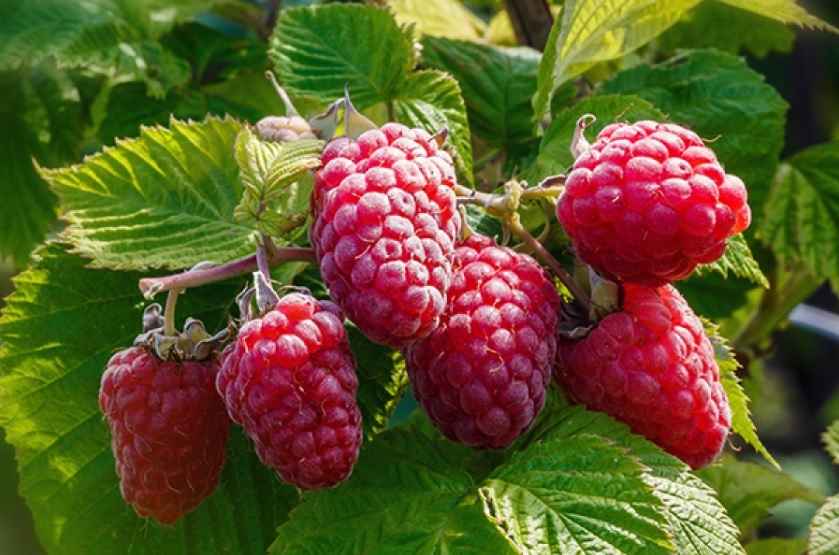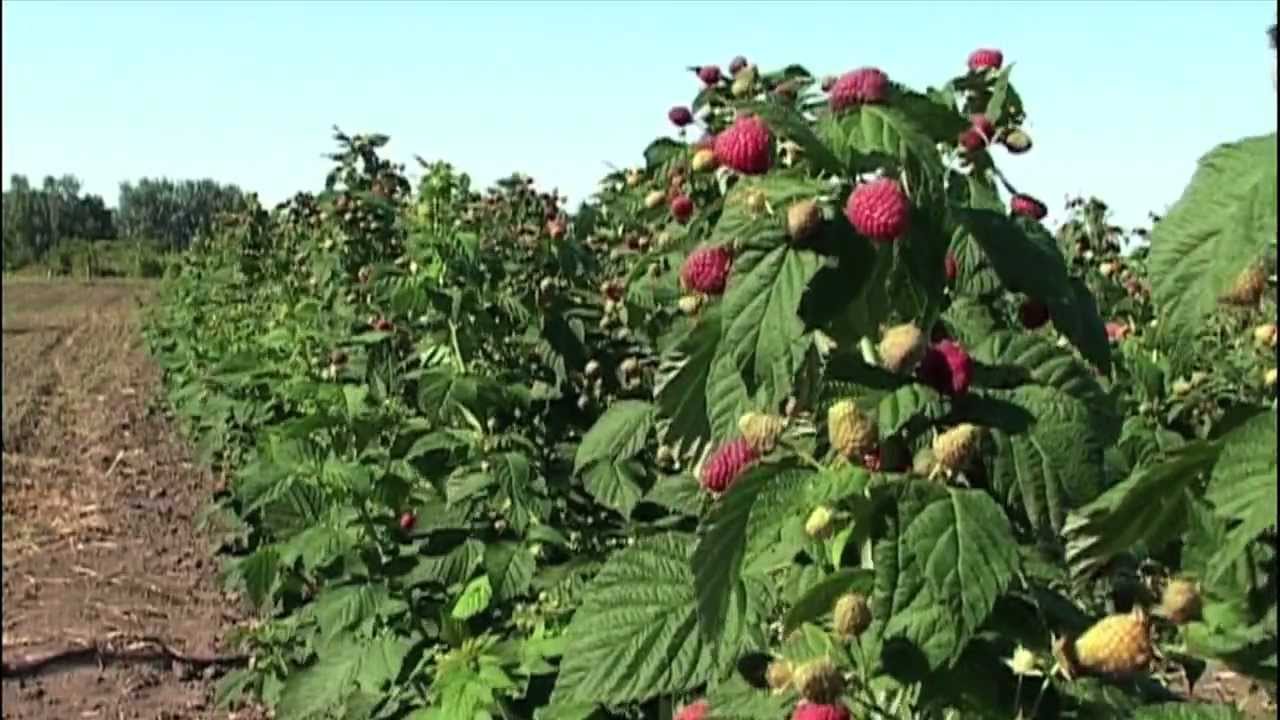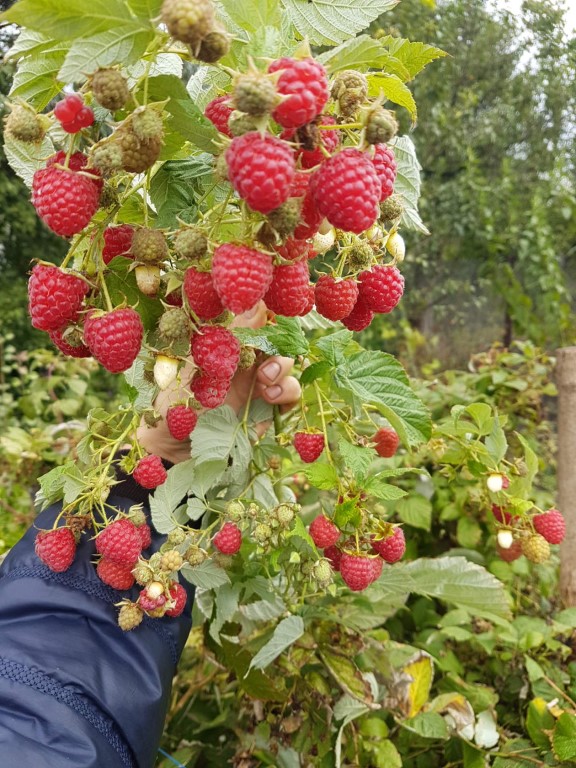Raspberries of the remontant type Golden Autumn (aka Golden September raspberries) were bred by free pollination 113-39-11. In 2001, it was allocated to the elite with the assignment of the number 24-1392, and three years later it began to be grown as a variety. The creators of this berry are breeders S. Evdokimov and I. Kazakov.
Description
Golden malina Golden autumn got its name from its rich yellow berries. Their weight can be from 4.5 to 7 grams. The shape of ripe fruits is slightly elongated and conical, the number of drupes is average. The taste of the fruit is rather sweet, with a pleasant and unobtrusive sourness. Compared to traditional red raspberries, the golden bush boasts a high content of vitamin C. The consistency of the pulp is quite dense, making them easy to transport, even over long distances.
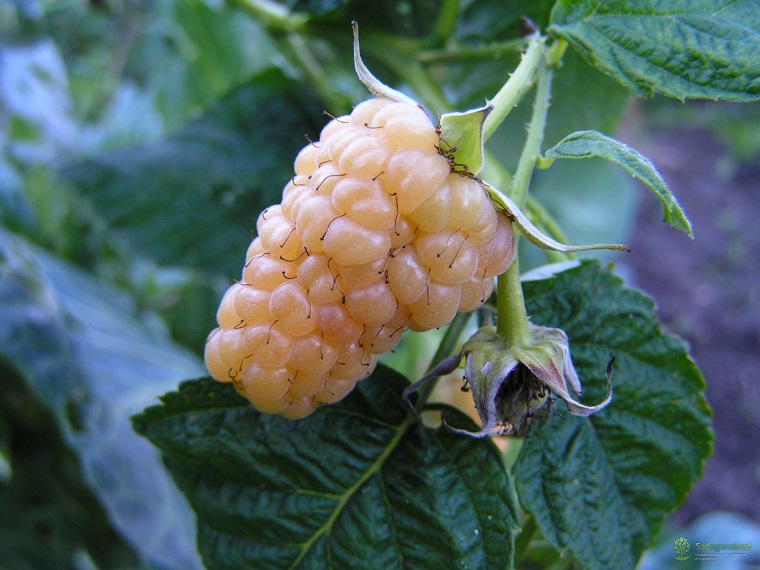
Golden autumn is rarely planted for sale
The harvest of the Golden Autumn is quite decent. From a bush in the conditions of an ordinary personal plot, it turns out to collect at least 2.5 kg of berries. If translated into an industrial scale, we are talking about the collection of 15 tons of berries per hectare. The fruits are equally well applicable both for consumption in natural form and for processing or freezing for the winter.
The variety is September, as it ripens by autumn and bears fruit throughout September. In most cases, the berries are stored on shrubs until frost.
The described varietal raspberry bush Golden Autumn is distinguished by a large indicator of frost resistance. It even tolerates significant drops in temperature without problems - up to -30 degrees.
Raspberries can grow up to two meters in height and differ in medium density of branches.
Young shoots of the Gold (Golden Autumn) variety have a dirty brown hue. This type of raspberry is very susceptible to the planting site. If it is chosen correctly, the harvest will be excellent. Ideally, planting should be done in sunny areas, on light and slightly damp fertile soils. Before placing seedlings in open ground, it is strongly recommended to ensure that the groundwater flows deeper than 1 meter from the roots of the shrub. Cultivation of raspberries Golden autumn is more successful if the raspberry is arranged near the wall of the house or fence. The main condition is that the site should in no case be shaded. The main disadvantage of the variety is poor wind tolerance.
On a note. The soil should be loosened periodically so that the roots receive the oxygen they need in sufficient quantities.
The best time to plant raspberries is September and October. The seedlings will have time to take root and will give a good harvest next year.
When choosing seedlings, especially close attention should be paid to the condition of the shoots, as well as the roots. The latter should not have dried out areas. As for the shoots, they must be straight and not have any damage. Any seasoned gardener will confirm that raspberry seedlings should never be bought during the growing season. There is a risk that they will not be able to take root.
The peculiarity of yellow raspberries lies not only in the fact that they are sweeter than ordinary ones. Compared to varietal plants, the varietal fruit of the Golden Autumn is worse stored and does not tolerate transportation very well.
Interesting. Not many people know, but all yellow raspberry varieties are hypoallergenic. Allergy sufferers, pregnant women and small children can eat such berries without fear.
Variety care
Landing
Before planting a popular fall variety, all weeds should be removed from the area. Be sure to use fertilizers. A bucket of humus and a glass of Nutrisol per square meter will be more than enough. The variety Golden Autumn (gold) is planted in the same way as ordinary raspberries. For group planting, no more than four bushes are placed per 1 square meter. For row planting, the distance between the rows should be about 1 meter.
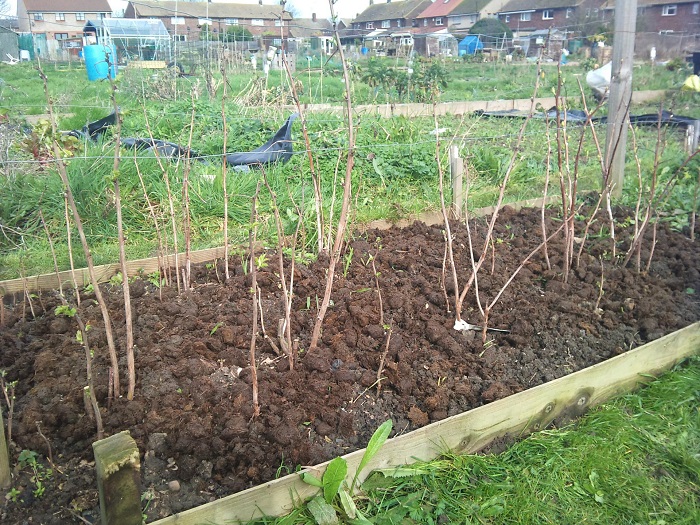
Planting raspberries is a very responsible event
Important! If the seedling has not been previously prepared, it is recommended to prune the shoots at the height of two or three buds. Alternatively, the seedling can be cut on the same surface as the ground. In this case, the planting must be covered with humus and soil.
Pruning
The care required by the Golden Autumn variety necessarily involves pruning. In total, two pruning is required per year. The first time this should be done in the spring during the period of bud formation, and the second - in the fall, before the first frost.
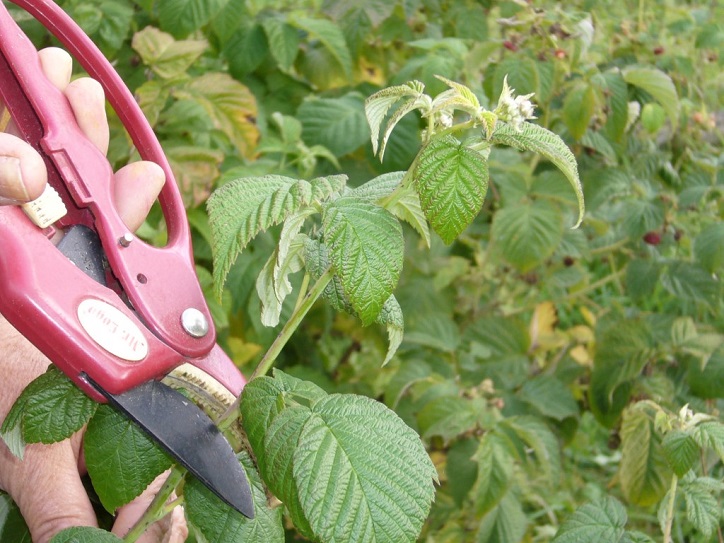
Trim raspberries by following the instructions.
Spring pruning allows you to get rid of damaged and frozen branches. It is best to carry out the procedure when the kidneys are already swollen enough. They allow you to determine whether the trunk is suitable for growing or not.
Before the onset of winter, the bushes are usually shortened. It is enough to leave 5-7 centimeters from the ground level. It is imperative to remove weak branches and all young growth, leaving no more than five to six large shoots. The procedure should be carried out using a special garden pruner, the use of which allows you to make a neat cut without risking harm to the branch.
Autumn pruning is carried out only if the plant has reached two years of age. Neglecting autumn pruning will lead to the fact that in the spring the bushes will grow too low, and the raspberry tree itself will lose its ability to be repaired.
Watering
A striking characteristic of the Golden Autumn variety is that it reacts very painfully to arid conditions, which, in turn, leads to a decrease in yield. It is necessary to ensure that the soil under the plants remains slightly damp in a constant manner. It is not recommended to fill the plant with water in excess. The variety also does not tolerate excess moisture - the roots begin to rot.
Transplant and thinning
The advantage of Golden Autumn is that it tolerates transplanting well. It is usually produced in parallel with thinning.
In the process of thinning, only the healthiest shoots are left in an amount of no more than 08-09 pieces per square meter. m. The rest is either removed or goes to seedlings, which are then transplanted to another place.
The whole raspberry plant should be transplanted about once every 10 years. After this period of time, the soil is no longer able to provide proper growth to plants, despite fertilization, and requires rest.
Repotting is usually done in fall or early spring. If we are talking about seedlings purchased in containers and already having a branched rhizome, they can be planted with the raspberry tree throughout the season.
Yellow Golden Autumn is in high demand among gardeners for its delicious fruits and ease of care.
